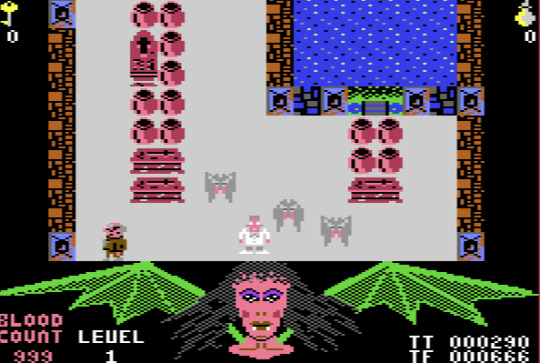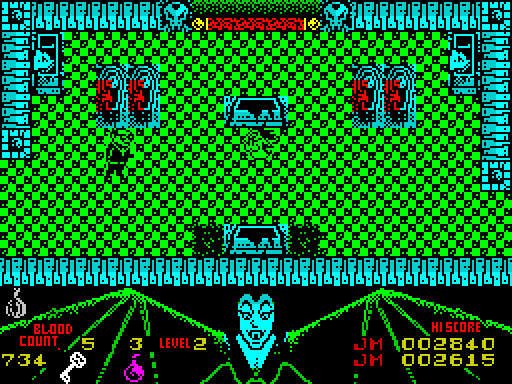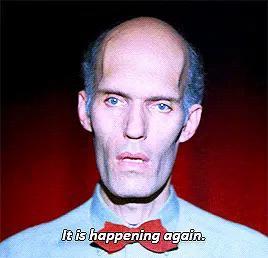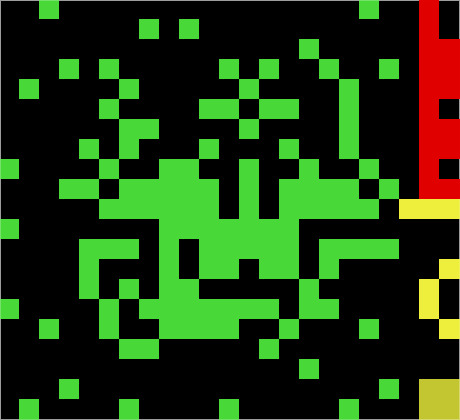#epilepsy is a spectrum
Text

325 notes
·
View notes
Text
For new year's, I'd like to send love to:
- people with autism
- people with epilepsy
- people with sensory processing disorder
- people with misophonia
- people with post-traumatic stress disorder
- people with heart conditions
- people with photophobia/light sensitivity
and anyone else trying to enjoy the new year without having to worry about loud noises or lights
#sam.txt#sam.neuro#sam.disabled#sam.comfort#asd#autism spectrum disorder#autism#actually autism#epilepsy#sensory processing disorder#misophonia#ptsd#post traumatic stress disorder#heart disease#photophobia#light sensitivity#actually photophobia#disability#actually disabled#neurodivergency#actually neurodivergent#nd#neurodivergent#disabled
61 notes
·
View notes
Text
i’m such a pussy that i can’t watch metalocalypse without getting a headache….. a total weenie hut junior moment every time i try
#I don’t know why???? it’s not that irritating in any fashion?????#and i like brendon small!!!! home movies was really good but definitely on the opposite end of the noise spectrum most of the time#it can’t be my epilepsy but also i’m not so weak i can’t handle a little metal#so i seriously don’t get why
7 notes
·
View notes
Text
Okay, fellow neurodiverse folks, I need your help. So I’m currently stuck in a (not home) environment that emphasizes *proper body language.* I want to do a project about how neurodiverse body language can be used to the same effect. For you guys, it would be great to tell me examples of neurodiverse body language, and what that typically indicates. If you are comfortable telling me how you are neurodiverse, that would also be helpful. Thanks!
18 notes
·
View notes
Text
My dad told me he just wants me to be perfectly happy and healthy. I AM CHRONICALLY ILL. ITS NOT GOING AWAY
This is the same person who refused to accept my Autism!!!
This is as good as it gets! Stop reminding me how much of an inconvenience MY chronic illnesses are!
Also, side note, he's dealt with epilepsy his whole life but he can't grasp the concept of my illnesses.
#postural orthostatic tachycardia syndrome#pots#autism#autistic spectrum#autistic experiences#actually autistic#pots sucks#blood pooling#dizziness#epilepsy#chronic pain#chronic illness#chronically disabled#disabilties#disability#disabled#daddy issues#father issues#parental problems#abelism
20 notes
·
View notes
Text
Random psychology disorder (somewhat) explained #3 (Factitious Disorder)
Diagnostic Criteria
Factitious Disorder Imposed on Self
A. Falsification of physical or psychological signs or symptoms, or induction of injury or disease, associated with identified deception.
B. The individual presents himself or herself to others as ill, impaired, or injured.
C. The deceptive behavior is evident even in the absence of obvious external rewards.
D. The behavior is not better explained by another mental disorder, such as delusional disorder or another psychotic disorder.
Factitious Disorder Imposed on Another (Previously Factitious Disorder by Proxy)
A. Falsification of physical or psychological signs or symptoms, or induction of injury or disease, in another, associated with identified deception.
B. The individual presents another individual (victim) to other as ill, impaired, or injured.
C. The deceptive behavior is evident even in the absence of external rewards.
D. The behavior is not better explained by another mental disorder, such as delusional disorder or another psychotic disorder.
Note: The perpetrator, not the victim, receives the diagnosis.
Diagnostic Features
The essential feature of factitious disorder is the falsification of medical or psychological signs and symptoms in the individual or others that are associated with the identified deception.
Individuals with factitious disorder can also seek treatment for themselves or another following induction of injury or disease.
The diagnosis requires demonstrating that the individual is taking surreptitious actions to misrepresent, simulate, or cause signs or symptoms of illness or injury even in the absence of obvious external rewards.
The diagnosis of factitious disorder emphasizes the objective identification of falsification of signs and symptoms of illness and not the individual motivations of the falsifier.
Methods of illness falsification can include exaggeration, fabrication, simulation, and induction.
While a preexisting medical condition may be present, the deceptive behavior or induction of injury associated with deception causes others to view such individuals (or, in the case of factitious disorder imposed on another, the victim) as more ill or impaired, and this can lead to excessive clinical intervention.
Individuals with factitious disorder might, for example, report feelings of depression and suicidal thoughts or behavior following the death of a spouse despite the death not being true or the individual's not having a spouse; deceptively report episodes of neurological symptoms (e.g., seizures, dizziness, or blacking out); manipulate a laboratory test (e.g., by adding blood to urine) to falsely indicate an abnormality; falsify medical records to indicate an illness; ingest a substance (e.g., insulin or warfarin) to induce an abnormal laboratory result or illness; or physically injure themselves or induce illness in themselves or another (e.g., by injecting fecal material to produce an abscess or to induce sepsis).
Although individuals with factitious disorder most often present to health care professionals for treatment of their factitious symptoms, some individuals with factitious disorder choose to mislead community members in person or online about illness or injury without necessarily engaging health care professionals.
Associated Features
Individuals with factitious disorder imposed on self or factitious disorder imposed on another are at risk for experiencing great psychological distress or functional impairment by causing harm to themselves and others.
Family, friends, faith leaders, and health care professionals are also often adversely affected by their behavior (e.g., devoted time, attention, and resources to provide medical care and emotional support to the falsifier).
Individuals with factitious disorder imposed on another sometimes falsely allege the presence of educational deficits or disabilities in their children for which they demand special attention, often at considerable inconvenience to education professionals.
Whereas some aspects of factitious disorders might represent criminal behavior (e.g., factitious disorder imposed on another, in which the parent's actions represent abuse and maltreatment of a child), such criminal behavior and mental illness are not mutually exclusive.
Moreover, such behaviors, including the induction of injury or disease, are associated with deception.
Differential Diagnosis
Deception to avoid legal liability. Caregivers who lie about abuse injuries in dependents solely to protect themselves from liability are not diagnosed with factitious disorder imposed on another because protection from liability is an external reward (Criterion C, the deceptive behavior is evident even in the absence of obvious external rewards).
Such caregivers who, upon observation, analysis of medical records, and/or interviews with others, are found to lie more extensively than needed for immediate self-protection are diagnosed with factitious disorder imposed on another.
Somatic symptom and related disorders. In somatic symptom disorder and the care-seeking type of illness anxiety disorder, there may be excessive attention and treatment seeking for perceived medical concerns, but there is no evidence that the individual is providing false information or behaving deceptively.
Malingering. Malingering is differentiated from factitious disorder by the intentional reporting of symptoms for personal gain (e.g., money, time off work).
In contrast, the diagnosis of factitious disorder requires that the illness falsification is not fully accounted for by external rewards.
Factitious disorder and malingering are not mutually exclusive, however.
The motives in any single case might be multiple and shifting depending on the circumstances and reactions of others.
Functional neurological symptom disorder (conversion disorder). Functional neurological symptom disorder is characterized by neurological symptoms that are inconsistent with neurological pathophysiology.
Factitious disorder with neurological symptoms is distinguished from functional neurological symptom disorder by evidence of deceptive falsification of symptoms.
Borderline personality disorder. Deliberate physical self-harm in the absence of suicidal intent can also occur in association with other mental disorders such as borderline personality disorder.
Factitious disorder requires that the induction of injury occur in association with deception.
Medical condition or mental disorder not associated with intentional symptom falsifitcation. Presentation of signs and symptoms of illness that do not conform to an identifiable medical condition or mental disorder increases the likelihood of the presence of a factitious disorder.
However, the diagnosis of factitious disorder does not exclude the presence of a true medical condition or mental disorder, as comorbid illness often occurs in the individual along with factitious disorder.
For example, individuals who might manipulate blood sugar levels to produce symptoms may also have diabetes.
#psychology#long post#mentalheathawareness#mental illness#mental health#factitious disorder#depresión#anxienty#anorexies#schizophrenic spectrum#obsessive compulsive spectrum#autism spectrum disorder#dissociative identity disorder#mood disorder#personality disorder#nerodiversity#diabetes#anemia#asthma#epilepsy
5 notes
·
View notes
Text
People should know better by now not to put pulsing lights in graphics and videos. Epilepsy is not as rare as people think; they're just used to the diagnostic criteria being as narrow as it was in the 20th century.
#actuallydisabled#actually disabled#ableism#disability tag#disability rights#disability justice#social justice#human rights#civil rights#epilepsy#ive not been diagnosed with epilepsy but with migraines which some argue are on the same neuro spectrum#pulsing lights hurt a lot#also only some seizures are convulsive; there are as many types of seizures as there are types if migraines
3 notes
·
View notes
Text


Epilepsy Cake
Celebrate what you didn’t choose.
#epilepsy#actually epileptic#epileptic problems#tw: epileptic content#cake#decorated cake#celebration#healing#awareness#seizures#neurodiversity#neurology#actually neurodivergent#neurodivergent#neurospicy#neurodiverse stuff#autism spectrum#high functioning autism#autism awareness#autistic
6 notes
·
View notes
Text
uhh a little song i made
#music#ix#music video#musicvideo#artists on tumblr#artists on the spectrum#autistic artist#give it a chance#lol#party#dance#sing#indie#electronic#epilepsy warning#EPILEPTIC WARNING#flashing lights
3 notes
·
View notes
Text
I feel so depressed...
Yes I taked my meds but
I saw so much people treat neurodivergent people like shit and isn't something just online
But is like I'm trying find a job since summer of last year and yes I was put aside because of my illnesses, mostly my Epilepsy (is controlled) and I feel so shit like I don't deserve really find a way to be financially stable by my own...
Is something wrong with me or with society?
I feel so lost and I starting loose hope in this path that I decided to follow since last month
Sure u can think that I'm being too dramatic for something so recent but isn't like that
I always was put aside so seeing "adults" put me aside makes my innerchild so much anxious about everything
#mental health#late diagnosed autistic#adhd mood#autistic spectrum#autistic community#mental illness#adhd stuff#audhd#epilepsy#Different treatment#Job search#Unemployed#depressed#social anxiety#anxienty
6 notes
·
View notes
Text
Autism Related Disorders
Long back, Autism was a rare phenomenon. nowadays it's a common hearing subject. There are certain symptoms that look similar to Autistic, which also need medical care and proper attention. Even though the symptoms look similar, these conditions identical to Autism are mostly misinterpreted as autism. In this blog, we will go through those conditions similar to autism and provide an overview of Autism.
What do you mean by Autism Disorder?
Autism spectrum disorder is a complex collective condition of communication and behavioral difficulties. The state shows its symptoms in the early stages of childhood and its severity varies.
Characteristics:
Impaired social skills
Repetitive behaviors
Conditions similar to Autism are:
Williams Syndrome
Fragile X Syndrome
Rett syndrome
Read more
Conditions co-occur with Autism:
Epilepsy affects ASD people more than the average population. its been reported that between the ages of 8 &26 epilepsy develop in people diagnosed with Autism.
Anxiety in Autistic children makes repetitive movements or sounds.
ADHD intensity will vary more in ASD peoples
Eating disorders are avoiding food and eating nonfood items due to having some sensory sensitivity to certain foods.
Sleep problems like chronic conditions affect 50% to 75% of Autistic children
Motor difficulties are caused due to weakness of muscles.
Read more details on Autism and comorbid conditions, and the importance of seeking appropriate professional help to avoid misdiagnosis & disorders similar to Autism by Aisha Hamna, M.Sc Psychology.
#autism#speciallyabled#autism spectrum disorder#epilepsy#eating disoder recovery#sleep problems#motor disorders#children#asd#actuallyautistic#autistic
2 notes
·
View notes
Text
neurodivergent isn’t just (level 1 and/or low support needs) autism & adhd
(it include depression anxiety OCD PTSD dissociative disorders & schizophrenia spectrum & personality disorders & multiple sclerosis & brain damage & neurological disorders & neurodevelopmental disorders many more, tho not everyone with these things identify as ND)
heck, neurodevelopmental disorders isn’t even just (level 1 &/ LSN) autism & adhd!!
(it include intellectual disability & epilepsy & learning disabilities [uk: learning differences] & tourette’s & cerebral palsy etc etc)
stop say “neurodivergent” or “neurodevelopmental disorder” when just mean (lvl 1 &/ LSN) autism & adhd!!
516 notes
·
View notes
Text
this video has made me think alot abt lizzies death. Her as a ghost. I think her ghost form would be the glitchiest shit ever because of falling so far. she's overflowing with colours, most of which we can't even see from the visible light spectrum. imagine the humans seeing her ghost being like "woah she's pretty epilepsy warning." and then the hybrids who can see more colour than humans are like "HOLY SHIT SHES A NIGHTMARE TO LOOK AT"
#ldshadowlady#secret life#slsmp#secret life smp#secret life ldshadowlady#secret life lizzie#life series#life series headcanon#ldshadowlady headcanon#trafficblr#trafficsmp#traffic smp#traffic life#traffic series
79 notes
·
View notes
Text
Hi everyone,
Since its epilepsy awareness month, I wanted to share an interesting study about its connection to autism. According to the abstract:
Autism is more common in people with epilepsy, approximately 20%, and epilepsy is more common in people with autism with reported rates of approximately 20%.
However, these figures are likely to be affected by the current broader criteria for autism spectrum disorder (ASD), which have contributed to an increased prevalence of autism, with the result that the rate for ASD in epilepsy is likely to be higher and the figure for epilepsy in ASD is likely to be lower.
Some evidence suggests that there are two peaks of epilepsy onset in autism, in infancy and adolescence. The rate of autism in epilepsy is much higher in those with intellectual disability. In conditions such as the Landau–Kleffner syndrome and nonconvulsive status epilepticus, the epilepsy itself may present with autistic features. There is no plausible mechanism for autism causing epilepsy, however.
The co-occurrence of autism and epilepsy is almost certainly the result of underlying factors predisposing to both conditions, including both genetic and environmental factors. Conditions such as attention deficit hyperactivity disorder, anxiety and sleep disorders are common in both epilepsy and autism. Epilepsy is generally not a contraindication to treating these conditions with suitable medication, but it is important to take account of relevant drug interactions.
One of the greatest challenges in autism is to determine why early childhood regression occurs in perhaps 25%. Further research should focus on finding the cause for such regression. Whether epilepsy plays a role in the regression of a subgroup of children with autism who lose skills remains to be determined.
I put the text in paragraphs so it’s easier to read and not jumbled up. I hope you all find this informative and interesting. 💜
#autism#actually autistic#epilepsy#epileptic#autism & epilepsy#autism & physical health#neurological disorders#PubMed Central#feel free to share and reblog
110 notes
·
View notes
Text
In honor of he who died and rose after three days in the grave and now grants life ever lasting to his followers I thought it only right I got into the spirit once. So Dracula, this one's for you:

Just look at it.
You have what appears to be (and is) an accountant being menaced by boobalicious vampire women twice his size, so he's got Ethan Winters beaten to the punch by 34 years. But don't be fooled. One glance into his 30-yard stare and its obvious why only Mr. Weems can stop these sinister She-Vampires:
Weems is dead on the inside yet still living, where the she-vampires are animated from within with life, while dead.
He is their antithesis.


So yeah, a pile of jank with a fun name crossed my path, and now you all have to hear about it. If you're not hitting 'J', you have no one to blame but yourself.
Released on a scad of systems, but mostly the ZX Spectrum and the C64, The Astonishing Adventures of Mr. Weems & the She-Vampires is a sort of 'Gauntroidvania'. It's also trying to push the limits of how titillating a pre-NES era game could be, though the C64 port's interface missed that memo.
The hacked c64 version was the one I played, but giantbomb had a lot of gifs from the ZX verison that I've upscaled for demonstration purposes.

The only bit of story is from the back package. Weems wants to feel something, so he's decided to take on the Great She-Vampire or die in her buxom grasp. Fair.


This game is not recommended for people with epilepsy, dignity, or in general.
Mr. Weems has a garlic gun to defend his ever-dropping blood supply (vampire hunter is an odd professon with anemia) and destroy the baddies...

All three of them, which are all introduced on the first screen!
You've got bats, they pop out of pots and attack you.


The manual says these guys are Frankenstein's' monsters, but they're clearly the giant from Twin Peaks trying to warn you that you've bought a dud.
On the C64, the lesser she-vampires are clearly based on Dracula's brides, whereas on the ZX, they're more like ghosts with big naturals.


Which means that to get both kinds of vampire babe from the secondary cover, you'd have to buy a cassette for your c64, and and for your ZX. And I don't mean a cartridge, I mean a, Cassette tape.



If you manage to stalk your way all the way to the end and find the gear you need to destroy her, the Great She-Vampire awaits:

There's no boss fight, but there is a 1 pixel nip, at least on the ZX spectrum.
From there you book it back the way you came, only every screen now has a she-vampire chasing you in a murderous rage. Make it out, and you win. Or maybe you didn't, because just like the Dungeon of Fear and Hunger, you can never really escape Mr. Weems & the She-Vampires.
Only Weems increases the immersion by truamatizing you, the player. Mr. Weems is fine. You don't have to worry about the Weems.

So...
Is it a good game?

Not remotely, but that isn't the point in the slightest.
It's temping to say this is the Incredibly Strange Creatures Who Stopped Living and Became Mixed-Up Zombies of video games, but that's not quite right. Weems has promise and ISCWSLaBMUZ doesn't make promises. It issues threats.
Mr. Weems has the charm of a concept that's all potential and zero execution. A dead-eyed accountant gunning his way in a Gauntlet-esq blitz through a vampire-babe infested castle is a fun idea, more-so with all the secret passages and 'gather items and backtrack to the boss' aspect. It's just everything else that goes wrong.

I mean, who doesn't want to hunt the Great She-Vampire to her penthouse for a good staking, I ask you?
#the astonishing adventures of mr. weems#retrogaming#zx spectrum#commodore 64#Mr. Weems#she-vampires#vampires#bad games#80s#twin peaks#dracula#transylvania 6-5000#geena davis#weird obsessions#jank#so bad its good#I swear I'm not fucking with you#this time
38 notes
·
View notes